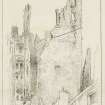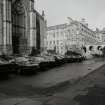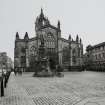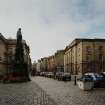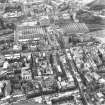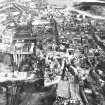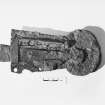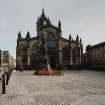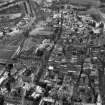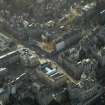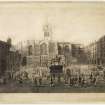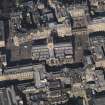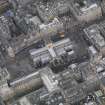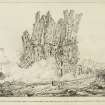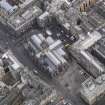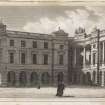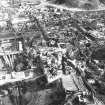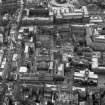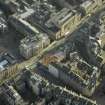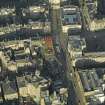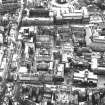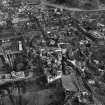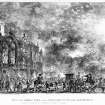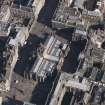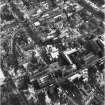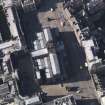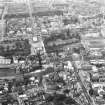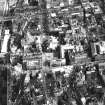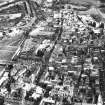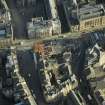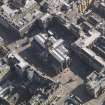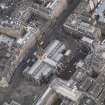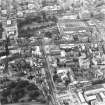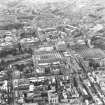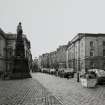Pricing Change
New pricing for orders of material from this site will come into place shortly. Charges for supply of digital images, digitisation on demand, prints and licensing will be altered.
Edinburgh, Parliament Square, General
General View (Period Unassigned)
Site Name Edinburgh, Parliament Square, General
Classification General View (Period Unassigned)
Alternative Name(s) Parliament Close
Canmore ID 113041
Site Number NT27SE 722
NGR NT 25670 73560
Datum OSGB36 - NGR
Permalink http://canmore.org.uk/site/113041
- Council Edinburgh, City Of
- Parish Edinburgh (Edinburgh, City Of)
- Former Region Lothian
- Former District City Of Edinburgh
- Former County Midlothian
REFERENCE:
SCOTTISH RECORD OFFICE
"New great stone tenement" at entrance to the Parliament Close. Extract disposition of parts of this by Robert Mill of Balfarg, H.M. Master mason, and Andrew Patersone, wright burgess of Edinburgh to Andrew Law.
1687 GD1/51/41
Tenement on East side of Parliament House entry. Extract contract between William Law, goldsmith and burgess of Edinburgh with - Robert Mylne of Balfarg, H.M. Master mason and Andrew Patersone, late deacon of wrights- for its construction.
1681 GD1/51/40
Devastation of "the fine houses at the Cross and in Parliament Square" by fire. Referred to in a letter from James Dundas to his son David. He does not believe the city's appearance will be restored.
1824 GD 35/128/47
REFERENCE:
Sources: Dean of Guild Bundle 1807 January-May 12.2.1807
Pet. of Rt Hon the Barons of the Exchequer of Scotland
Parliament Square - south side
Plan of entrance floor and elevation
Signed Robt Reid, Archt Edinb 1806 [1807 PO Directory, Reid, Robert, Architect, 14
South Castle St]
Sources: Dean of Guild Bundle 1813 28.3.1813
Pet. Robert Pitcairn, writer
Parliament Square, Johns Coffee House
Minor interior alterations
Plan encl. Unsigned.
Sources: Dean of Guild Bundle 1813 January-June 24.6.1813
Pet. John Finlayson, solicitor in the Supreme Courts
Parliament Square, house in Scale Stair
Undertook interior repair without warrant
Plan of flat enclosed, unsigned.
Sources: Dean of Guild Bundle 1815 July-December 12.8.1813
Pet. James Bristo Fraser, writer
Parliament Square. Southmost half of flat house in the Scale Stair entry
Minor alterations and repairs - interior
Plans enclosed unsigned. Wm J Whatman, 1804.
Destruction (15 November 1824 - 17 November 1824)
Fire broke out about 10 o’clock on the night of Monday 15th November 1824 in a second floor workshop in Old Assembly Close, belonging to the engraver, James Kirkwood (fl.1792-1804), whose specialisms included the engraving of maps (see below) and banknotes and the manufacture of globes. This was later attributed to the burning of a pot of linseed oil used in the preparation of copper plates.
Fire engines arrived promptly, but there was delay in setting them to work, and by 11 o’clock the fire had spread to the upper six storeys of the tenement.
The fire then spread across the narrow close to two tenements on the west side of the close. Owing to its narrowness, the engines were unable to play on the fire, which engulfed the building, and then spread to the adjoining Courant newspaper office. The fire then spread to destroy much of the Old Fish Market Close and Assembly Close. Embers began to rain down on the Tron Kirk.
About 5 o’clock on the morning of the 16th, the upper part of the façade of the Courant collapsed into the street.
Other buildings damaged included Abraham Thomson’s bookbindery, which had just been rebuilt following an earlier fire, the king’s old Stationery Warehouse on the west side of Old Assembly Close, the Old Assembly Hall, then occupied as a warehouse by Bell and Bradfute, booksellers. ‘These back tenements formed one of the most massive … piles of building in the ancient city, and in former times were inhabited by persons of the greatest distinction’. ‘A great part of the southern land fell to the ground; but a lofty and insulated pile of side wall, broken in the centre, rested in its fall, so as to form one-half of an immense pointed arch, and remained for several days in this inclined position’.
By 9 o’clock on Tuesday morning the fire had abated, but by 12 o’clock the steeple of the Tron (about 100 yards east of the fire) was found to be ablaze, melting the lead on the roof, and causing the bell to fall. However, the main part of the building was saved by an engine belonging to the Board of Ordnance, and the fire put out.
At 10 o’clock that night a fire broke out in the attic of an eleven-storey tenement on Parliament Square. As this was to windward of the main fire, this lead to speculation that ‘some desperate incendiary had resolved to destroy the city’.
All efforts were directed to saving the Parliament House and Law Courts. The Lord Advocate, Sir William Rae of St Catherine’s, is reported to have taken a turn working on the engines fighting the fire in a tenement at the head of Old Assembly Close, where he himself had been born.
Despite sleet and hail on Wednesday morning, the fire continued, spread by blowing embers to Conn’s Close, but there it stopped.
Damage:
High Street: four tenements of six storeys facing the Street, with their underground storeys.
Conn’s Close: two timber-fronted lands ‘of great antiquity’
Old Assembly Close: four houses of seven storeys
Borthwick’s Close: six ‘great tenements’
Old Fish Market Close: four tenements of six storeys
Parliament Square: four double tenements of seven to eleven storeys, including the shop of the caricaturist, Kay.
More than 300/400 homes were destroyed, and 13 people killed.
On Thursday the ruins were inspected by the authorities. The height of the ruins posed an obvious threat, and it was proposed to batter one eleven-storey ruin with cannon. The task of demolition was delegated to Captain Francis Head of the Royal Engineers. Captain Hope of HMS Brisk, then in Leith Roads, also offered assistance. Forty of his seamen threw a line over the southern gable above Heron’s Court, but brought down only a small portion. The next day Hope returned with iron cables, chains and ropes, while sappers undermined the wall. The mines were blown, and the gable brought down ‘almost perpendicularly’.
Watching Brief (14 April 2011)
NT 25760 73555 On the 14 April 2011 human remains were encountered by a contractor undertaking repair work in a 2.2m by 1.1m service trench in Parliament Square. The single bone had been recovered prior to the arrival of the archaeologist on 15 April 2011. The trench contained a sequence of tarmac and hardcore, overlying made ground consisting of soft sediments of indeterminate age, recorded at a depth of between 0.25–0.8m (the limit of the excavation). A single further piece of charnel was recovered from these soils.
Archive: RCAHMS (intended)
Funder: Scottish Court Service
AOC Archaeology Group 2011






















































